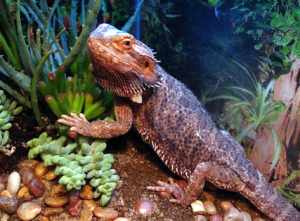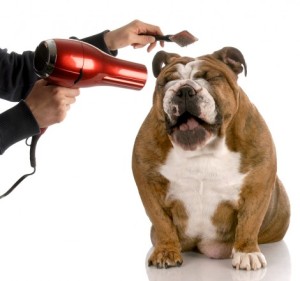Lucky for us, there are vaccines to help prevent many illnesses that affect dogs and cats and cats. Vaccinating your dog or cat has long been considered one of the easiest ways to help him live a long, healthy life. Not only are there different vaccines for different diseases, there are different types and combinations of vaccines.
Although vaccination has the potential to protect pets against life-threatening diseases, vaccination is not without its risks. Our veterinarians at Lange Animal Clinic have heard been some controversy regarding the duration of protection and timing of vaccination, as well as the safety and necessity of certain vaccines. What does this all mean for your dog or cat? Vaccination is a procedure that has risks and benefits that must be weighed for every dog relative to his lifestyle and health. Any of the Lange Animal Clinic veterinarians can determine a vaccination regime that will provide the safest and best protection for your individual pet. Here are answers to some of your most frequently asked questions regarding vaccines:
What Exactly Are Vaccines?
Vaccines help prepare the body’s immune system to fight the invasion of disease-causing organisms. Vaccines contain antigens, which look like the disease-causing organism to the immune system but don’t actually cause disease. When the vaccine is introduced to the body, the immune system is mildly stimulated. If a dog or cat is ever exposed to the real disease, his immune system is now prepared to recognize and fight it off entirely or reduce the severity of the illness.
How Important Are Vaccines to the Health of My Dog or Cat?
Bottom line—vaccines are very important in managing the health of your dog or cat. That said, not every dog or cat needs to be vaccinated against every disease. It is very important to discuss with one of our veterinarians or veterinary technicians a vaccination protocol that’s right for your dog. Factors that should be examined include age, medical history, environment, travel habits and lifestyle. Lange Animal Clinic veterinarians highly recommend administering core vaccines to healthy dogs and cats.
What Are Core Vaccines for dogs?
Recently, the American Animal Hospital Association’s Canine Task Force published a revised version of guidelines regarding canine vaccinations. The guidelines divide vaccines into three categories—core, non-core and not recommended.
– Core vaccines are considered vital to all dogs based on risk of exposure, severity of disease or transmissibility to humans. Canine parvovirus, distemper, hepatitis and rabies are considered core vaccines by the Task Force.
– Non-core vaccines are given depending on the dog’s exposure risk. These include vaccines against Bordetella bronchiseptica, Borrelia burgdorferi and Leptospira bacteria.
What Are Core Vaccines for cats?
The American Association of Feline Practitioners divided vaccines into two categories-core and non-core. Core vaccines are considered vital to all cats and protect against panleukopenia (feline distemper), feline calici virus, feline herpes virus type I (rhinotracheitis) and rabies. Non-core vaccines are given depending on the cat’s lifestyle; these include vaccines for feline leukemia virus, Bordetella, Chylamydophila felis and feline immunodeficiency virus.
One of the Lange Animal Clinic veterinarians can assist with questions regarding core vaccinations for your dog or cat.
Are Any Vaccines Required By Law?
Each state has its own laws governing the administration of the rabies vaccine. Some areas require yearly rabies vaccination. Other areas call for vaccines every three years. An up-to-date canine rabies vaccination is a legal requirement. Be sure to keep proof of your dog’s rabies vaccines with his medical records.
How Often Should My Adult Dog or Cat Be Vaccinated?
Our veterinarians and veterinary technicians can best determine a vaccination schedule for your dog or cat. This will depend on the type of vaccine, your pet’s age, medical history, environment and lifestyle. Some adult dogs and cats might receive certain vaccines annually, while other vaccines might be given every 3 years or longer.
Are There Any Risks Associated With Vaccines?
Immunizations mildly stimulate an animal’s immune system in order to create protection from specific infectious diseases. This stimulation can create mild symptoms, ranging from soreness at the injection site to fever and allergic reactions. Another less common side effect is the development of immune mediated disease following vaccination.
That said, it is important to realize that vaccines have saved countless lives, and play a vital role in the battle against canine infectious disease. Additionally, rabies vaccinations have saved the lives of countless dogs and cats—and many humans as well. In some developing countries, hundreds of people die each year due to rabies contracted from dog or cat bites.
As with any medical procedure, there is a small chance of side effects. In most cases, the risks are much smaller than the risks of disease itself. But it is important to talk to your veterinarian about your dog or cat’s medical history before he is vaccinated.
What Symptoms Should I Look For?
Most dogs and cats show no ill effect from vaccination. Vaccine reactions may be minor and short-lived or require immediate care from a veterinarian. Clinical signs include:
- Fever
- Sluggishness
- Loss of appetite
- Facial swelling and/or hives
- Vomiting
- Diarrhea
- Pain, swelling, redness, scabbing or hair loss around the injection site
- Lameness
- Collapse
- Difficulty breathing
- Seizures
It is best to schedule your dog or cat’s appointment so that you can monitor him for any side effects following administration of the vaccine.
What Should I Do if I Think My Dog or Cat Is Having an Adverse Reaction to a Vaccine?
If you suspect your dog is having a reaction to a vaccine, call one of the Lange Animal Clinic’s veterinarians immediately.




